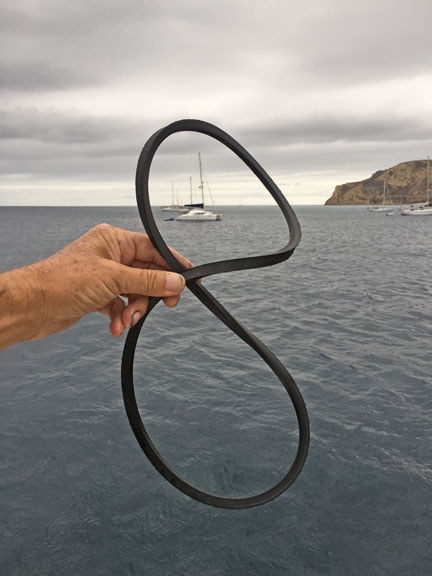
It Was Just the Belt

©2016Latitude 38 Media, LLC
While motoring our 63-ft cat Profligate from San Diego to Santa Barbara for the start of last September’s SoCal Ta-Ta, we noticed some black gooey stuff accumulating at the bottom of the port diesel and on the engine room sole. It felt a little too thick to be oil, but we couldn’t think of what else it could be. So we spent a long time feeling around the bottom of the engine trying to detect the source of the leak. All we got for our efforts were dirty hands.
Naturally we checked the belts, too, but they looked fine and had been given the seal of approval by the mechanic before we’d gone north from Puerto Vallarta, 1,000 miles before.
That night we lay in our bunk thinking we were probably looking forward to lifting the engine out and lord knows what else. What fun. And expense, too.
The next day we had reason to call Jim Drake, who had been the captain of our Ocean 71 Big O during her European adventures, and is now a Yanmar dealer at Drake Marine in South San Francisco.
"It’s the belt," Jim said, immediately knowing what the problem was from our description of the black crud.
And he was right. Just because a belt looks good and has proper tension doesn’t mean it’s not worn out and leaving belt debris all over the engine. So if you find sort of, but not quite, oily stuff around your diesel, check the belt. Look for cracks, fraying, splits and brittle spots. In our case, the sides of the belt looked slick and glazed. Another symptom can be the scent of burning rubber.
